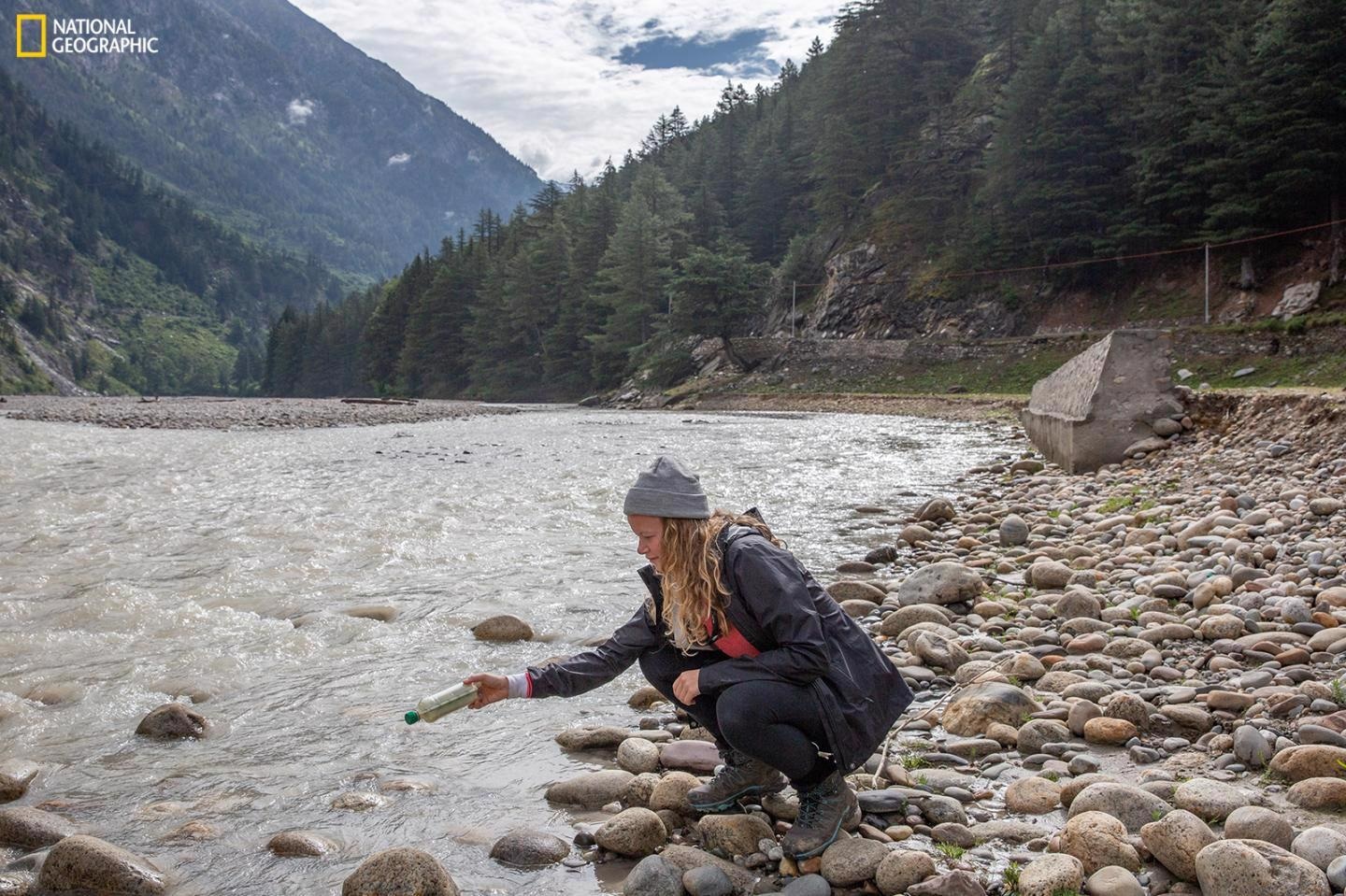Dec 3 2020
As shown by electronic tags released in the Ganges river, plastic pollution can travel thousands of kilometers in a matter of months.
 Emily Duncan releases a bottle. Image Credit: Sara Hylton NGS.
Emily Duncan releases a bottle. Image Credit: Sara Hylton NGS.
GPS and satellite tags were added to plastic bottles and they were released in the Ganges and the Bay of Bengal. The utmost distance tracked was 2,845 km (1,768 miles) in 94 days.
Performed by scientists from the University of Exeter and the Zoological Society of London (ZSL), the study was part of the National Geographic Society’s “Sea to Source: Ganges” expedition.
Our ‘message in a bottle’ tags show how far and how fast plastic pollution can move. It demonstrates that this is a truly global issue, as a piece of plastic dropped in a river or ocean could soon wash up on the other side of the world.
Dr Emily Duncan, Study Lead Author, Centre for Ecology and Conservation, University of Exeter
In the Ganges, the bottles usually moved in stages, getting stuck at times on their way downstream. By contrast, at sea the bottles covered much greater distances, following coastal currents initially but further dispersing more extensively.
In total, 25 bottles of 500-mL volume were used for the study, with shape, size, and buoyancy chosen to simulate the movement of any plastic bottle.
The hardware inside each plastic bottle is entirely open source, ensuring that researchers can replicate, modify or enhance the solution we presented to track other plastics or environmental waste.
Alasdair Davies, Conservation Technology Organization Arribada and Zoological Society of London
“Embedding electronics inside plastic bottles also presented a unique opportunity to use both cellular and satellite transmitters, ensuring we could track the movement of each bottle through urban waterways where mobile phone networks were available, switching to satellite connectivity once the bottles reached the open ocean,” added Davies.
The scientists believe that bottle tags could be a “powerful tool” to educate, increase awareness, and promote behavior change.
This could be used to teach about plastic pollution in schools, with children able to see where their bottle goes. Data from these tags could feed into global models to give us a clearer picture of how plastic moves across the ocean and where it ends up.
Dr Emily Duncan, Study Lead Author, Centre for Ecology and Conservation, University of Exeter
The team included researchers from the universities of Plymouth (UK), Dhaka (Bangladesh), and Georgia (USA), as well as technology consultancy Icoteq Ltd.
Journal Reference
Duncan, E. M., et al. (2020) Message in a bottle: Open source technology to track the movement of plastic pollution. PLOS ONE. doi.org/10.1371/journal.pone.0242459.